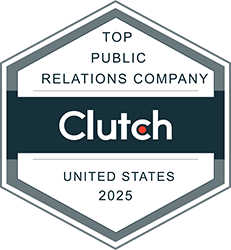Even though we’re living in the age of social media, email is still the most-used tactic for small and medium-sized business marketing. For a business with thousands of email subscribers to a mailing list, an email marketing platform is necessary. I mean, who wants to send thousands of individual emails one by one? The answer is nobody. But with several platform options available, how can we tell which are the best?
If you search for an email marketing platform, then you’re sure to see the names MailChimp and Constant Contact, two platforms used by thousands of companies. A poll of 60 small businesses found that more than half the companies were using both MailChimp and Constant Contact, though 75% of respondents said they preferred MailChimp. So which service is the best? And if MailChimp is better, why are so many businesses still using both? We get down to the bottom of this search to find which email marketing platform is superior. Is it MailChimp, Constant Contact, or something else?
MailChimp vs Constant Contact
Price
As long as you don’t exceed 2,000 email subscribers and 12,000 emails per month, you don’t ever have to pay for MailChimp’s services. This is great for small businesses that are just starting out with email marketing, as it gives them the opportunity to learn best practices and build their list, without having to pay. For lists with more than 2,000 subscribers, MailChimp pricing begins at $10/month, and goes up from there. They offers this handy tool where you enter your number of subscribers and it automatically generates the price you would pay for a more accurate and customized prize. Check it out here. There is also a “pay as you go” option, and nonprofit organizations receive a 15% discount.
As for Constant Contact, there is a 60-day free trial for lists with a mere 100 subscribers or less, but you can send unlimited emails to that list. It makes more sense to use MailChimp, as it’s always free and you get 2,000 subscribers, whereas CC only gives you 60 days and 100 contacts. Once the Constant Contact free trial is over, pricing begins at $15/month for 500 subscribers. For 501-2,500 subscribers, the price goes up to $35/month, and for 2,500-5,000 subscribers the price reaches $55/month. A mailing list of 5,000-10,000 subscribers costs $85/month, and for numbers higher than that, Constant Contact asks for you to call them. Constant Contact is more expensive than MailChimp (10,000 subscribers for MailChimp is only $75), however nonprofits do receive a 30% prepaid discount. In the end, MailChimp offers better free capabilities, and slightly cheaper pricing. With Constant Contact, there is a very limited amount that can be done unless you are willing to pay, whereas Mailchimp may fulfill the needs for those with small lists who are just starting out.
Verdict: Both services really depend on how many subscribers you have and how many emails you send, so unless you call and get a personalized quote for your needs, it’s hard to say, but we’re going to say MailChimp is our preferred choice price-wise.
Features
Constant Contact and MailChimp are not that different when it comes to features and content. Both have over 400 email templates to choose from, yet Constant Contact is said to have a slightly better selection. Constant Contact also has a greater deliverability rate than MailChimp. However, this rate is only about 1-2% better than MailChimp’s, and Constant Contact has been blacklisted by military recipients, which is something to keep in mind depending on your audience. Constant Contact also has a customer phone support line, which MailChimp does not. That can make it difficult when things go wrong and the answer isn’t obvious in the FAQs or a Google search.
However, there are a few things working against Constant Contact. It has an additional fee to send surveys to your subscribers, which isn’t helpful if that’s something you desire to send frequently. Constant Contact also does not have unlimited free storage for photos while MailChimp does. MailChimp comes with an inbox inspector, which makes sure your email design looks great in all the major email clients and mobile apps, but Constant Contact does not. Both have several integration options with social media and other web outlets, but MailChimp does offer more.
Verdict: We’re going to go with MailChimp again here. The inbox inspector and social integrations just can’t be beat. They ensure your emails look great, and streamline perfectly with all your social platforms.
Analytics
Both MailChimp and Constant Contact help you understand how your email campaigns are doing. Both have organized reports to show you how many opens and clicks each send garners, with charts comparing your rates to previous performances and industry averages. Constant Contact and MailChimp manage analytics in basically the same way, so either is a fine option if you’re concerned about keeping track of your results.
Final Verdict: MailChimp is less expensive if you have hundreds of thousands of subscribers, so for bigger companies, MailChimp is the right choice. If you have a smaller mailing list, you may prefer the more customizable and dependable options with Constant Contact if you’re willing to pay a little extra.
Here at BIGfish, we use MailChimp to send Iceland Naturally’s monthly newsletter (P.S. you should sign up for it here! http://eepurl.com/ZiCib). While both platforms have pros and cons, we go with MailChimp because it is significantly cheaper for our mailing list, we like the ease of the editing and template design processes, and for us, it works just fine.
Final decision? You can’t beat a good price. MailChimp is our winner. But if you’re still not satisfied, then here are two alternative options to consider.
VerticalResponse
VerticalResponse is a very mobile and social media-friendly platform, and some companies that use VerticalResponse include the YMCA and Annie’s Mac and Cheese. One cool thing about VerticalResponse is that their emails are, well, you guessed it – responsive! Their templates adhere to “responsive design” principles, which means each and every one will adjust automatically to look great on a phone, tablet or PC (If you have custom code, you can import it into our HTML editor.) Check out some examples here. They also love nonprofits (no really!) – nonprofit businesses get the choice of 10,000 free emails a month or a 15% off payment plan.
Emma
There are only 40 template choices available for the email marketing platform Emma, but those templates are known to have better design than all other services – and for a fee, your business can get a completely custom design. Emma is a great choice for a company looking to stand out creatively. Emma is only free for fourteen days, and after that, pricing begins at $45/month for up to 2,500 subscribers. As always, nonprofits receive a discount, and for Emma it is 20% off. Although Emma may be pricier, the custom design template may be worth it for a business that wants to be completely unique. For reference, Shopify, Eventbrite, WordPress, and hundreds of universities use Emma.
Hopefully the hunt for a marketing email service is a little more clear. What are your thoughts on these platforms? Love them? Hate them? Comment below!


